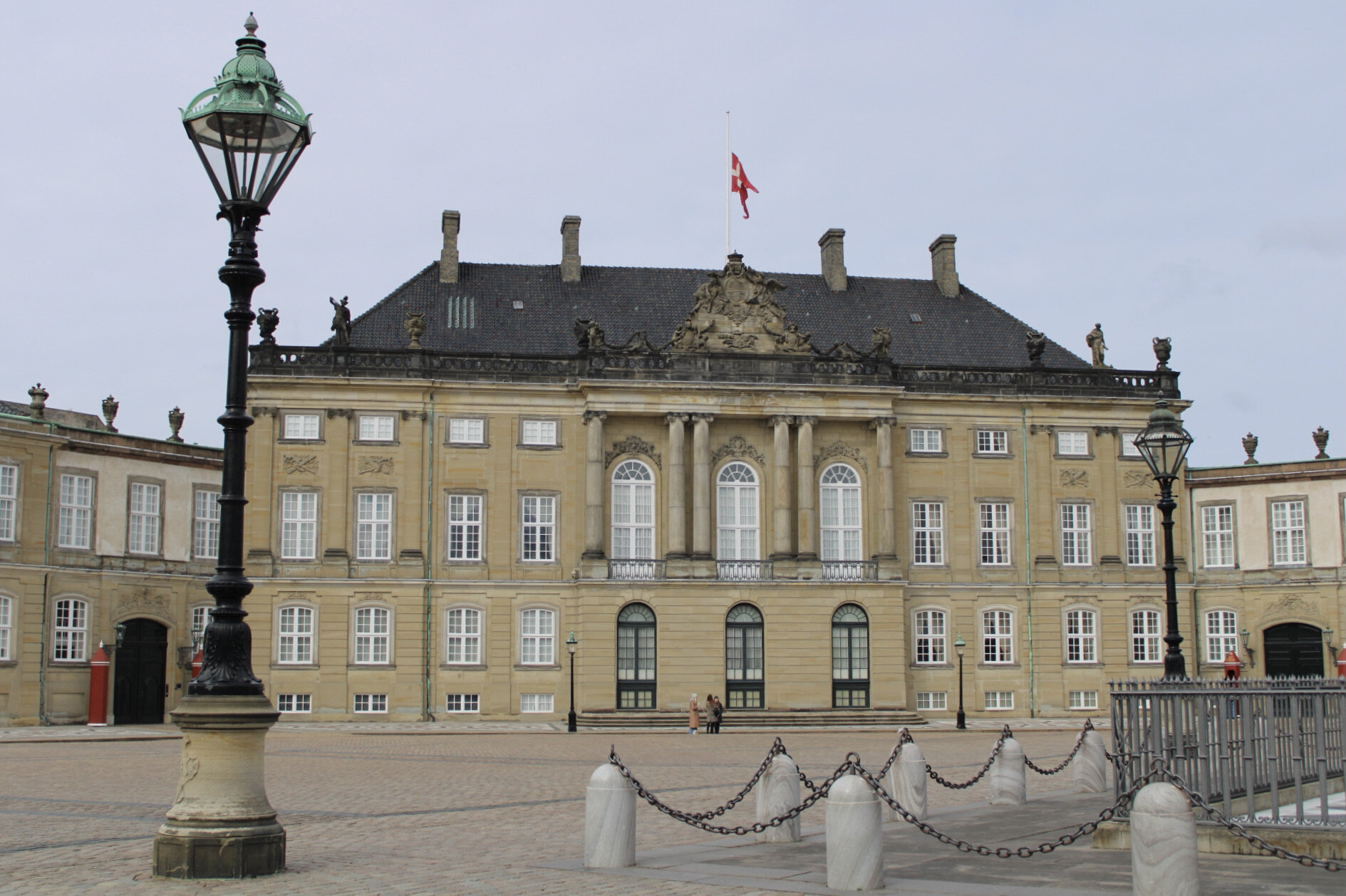Visit Amalienborg Palace in Copenhagen
Lying in the centre of Copenhagen, and within walking distance of other attractions like Nyhavn and The Little Mermaid, the four royal palaces of Amalienborg are a must-see for any visitor to the Danish capital. Quench your thirst for some Danish royal history at the museum and experience the presence of one of the world's oldest monarchies from the palace square, where crowds regularly assemble to watch the changing of the guards.
The history of Amalienborg Royal Palace
The four baroque palaces were built in the mid-18th century as residences for the families of the highest Danish nobility. A new, elite neighbourhood called Frederiksstaden had just been founded, and Amalienborg formed the crowning glory to the project, topped off by the bronze statue of the eponymous Frederik V on horseback at the very centre of the square.
The symbolism here is pretty obvious to the viewer: the king, who ruled by the grace of God, faces the Frederikskirke (Marble Church) while surrounded by the palaces of the highest nobles in the land. Through faith, the king gets his inspiration and right to rule from God and similarly, the people trust in the wisdom of the absolute monarch.
If you face the same direction as Frederik and proceed clockwise, the four palaces of Amalienborg are as follows:
Christian VIII Palace – open to the public as a museum on the constitutional monarchs (mid-19th century to the present).
Frederick VIII Palace – Official Copenhagen residence of Crown Prince Frederik.
Christian IX Palace – Copenhagen residence of Queen Margrethe II.
Christian VII Palace – used for royal receptions, occasionally open for guided tours.
In 1794, the Christiansborg Palace burnt down and the Danish royal family temporarily moved into all four Amalienborg palaces. This became a permanent move at the end of the absolute monarchy (1849) when the rebuilt Christiansborg Palace became the seat of the Danish parliament.
The Changing of The Royal Guard
Amalienborg is famous for its Royal Guard, called Den Kongelige Livgarde. You can see it for yourself every day as they march from their barracks in 100 Gothersgade by Rosenborg Castle through the streets of Copenhagen and end up at Amalienborg, where the changing of the guard takes place at 12:00 noon.
Christain VIII’s Palace houses the Amalienborg Museum, which showcases private interiors of the most recent kings and queens and an exhibit on the monarchy today with its many traditions.
The history covered by the museum goes back 150 years as far as Christian IX and Queen Louise, who were known as "the in-laws of Europe" because four of their children ascended to the thrones of Britain, Greece, Russia and Denmark.
As in a journey through time, the rooms of Christian IX, Queen Louise and their descendants stand preserved as they would have originally been. Each reflects the modern taste of its period and the personalities of those monarchs.
Visiting the Amalienborg Palace
As I mentioned, the Amalienborg Palace complex is just a few blocks from Nyhavn to the south. Approach along the waterfront to take in the direct line which joins the Opera House across the harbour to the east of Amalienborg and Frederikskirke to the west.
It’s obviously free to stroll through the square, and there are almost always a group of people stopping to take photos of the buildings. If you are cycling to the site, just ensure you don’t arrive when crowds are congregating, or the changing of the guards is happening at 12:00 midday!
The Amalienborg Palace Museum
The Amalienborg Palace Museum in the Christian VIII Palace is open from 10:00 to 16:00.
The palace is closed most Mondays from November to April but may be open on holidays and during school vacations.
Tickets for Amalienborg Palace is DKK95 for adults, free for children under 18, and DKK65 for students.



